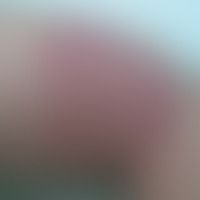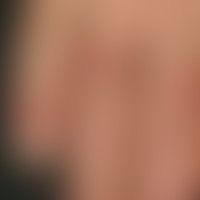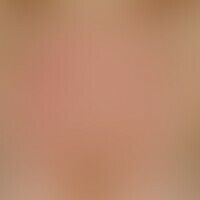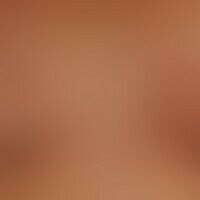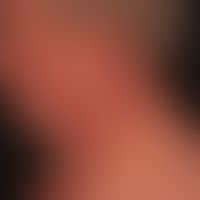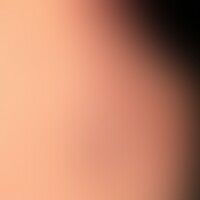Image diagnoses for "Plaque (raised surface > 1cm)", "red"
434 results with 1903 images
Results forPlaque (raised surface > 1cm)red

Seborrheic dermatitis of adults L21.9
Dermatitis, seborrhoeic: Detailed view: Coarse lamellar scaling, erythematous plaques.
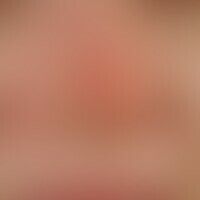
Psoriasis vulgaris L40.00
Psoriasis vulgaris: Erythematous, scaly plaque on the tip of the nose of a 34-year-old woman, which appeared for the first time about 1.5 years ago and measured about 1.5 cm.

Atopic dermatitis in children and adolescents L20.8
Eczema atopic in child/adolescent: 12-year-old child; acute episode of the previously known atopic eczema with vesicular, occasionally also pustular plaques.
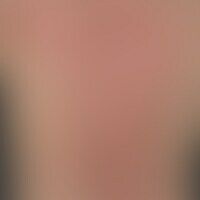
Lupus erythematosus (overview) L93.-
Rowell's Syndrome: Erythema exudativum multiforme-like exanthema in "subacute cutaneous lupus erythematosus
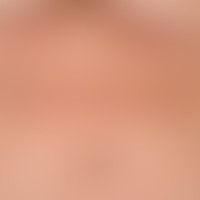
Dyskeratosis follicularis Q82.8
dyskeratosis follicularis. presentation of multiple, chronically stationary, disseminated, red nbis rfot-brown papules localized in the submammary and upper abdomen. in these areas strong increase of skin changes, especially in summer with increased sweating.
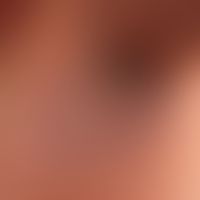
Pemphigus chronicus benignus familiaris Q82.8
Pemphigus chronicus benignus familiaris: chronic, sharply defined, red, rough plaque with multiple, spontaneous and, when stretched, gaping, streaky erosions (accordion phenomenon)
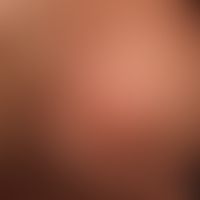
Tinea capitis profunda B35.02
Tinea capitis superficialis: easily inflammable, blurred, alopecic focus in the occipital region in a 7-year-old boy. low crust formation. no itching. no pain. fungal culture: Trichophyton mentagrophytes.
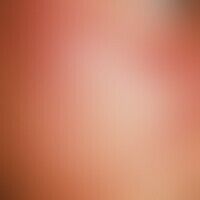
Drug effect adverse drug reactions (overview) L27.0

Microsphere B35.0
Microspore: multicenter, acute, since 4 weeks existing, increasing, initially 0.2-0.3 cm large, later due to size increase and confluence up to 10 cm large, blurred, strongly itchy, red, rough plaques (scaling, crusts); highly contagious special form of Tinea corporis due to microsporum species.

Necrobiosis lipoidica L92.1
Necrobiosis lipoidica: detailed picture with pronounced atrophy of the surface epithelium.

Keratosis pilaris Q82.8
keratosis pilaris syndrome. keratosis pilaris syndrome with ulerythema ophryogenes. small, follicularly bounded hyperkeratoses in the area of the lateral eyebrows, the forehead-hairline and in the cheek area. erythema in the area of the eyebrows with hair loss and without scaling. sometimes slight itching.
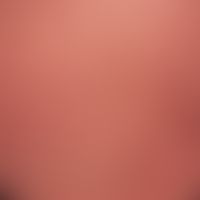
Contact dermatitis toxic L24.-
Contact dermatitis, toxic: Severe, not quite fresh, painful dermatitis after application of an ointment containing dithranol.
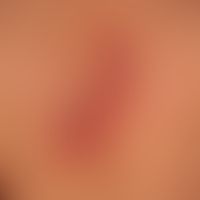
Basal cell carcinoma (overview) C44.-
Basal cell carcinoma superficial: slowly growing, symptom-free red plaque with crusty edges, which has been present for several years.

Larva migrans B76.9
Larva migrans. general view: Acutely occurring, itchy, dynamically increasing, linear, firm, livid red plaque on the right back of the foot, existing since 3 weeks, after a beach holiday in Thailand.

Psoriasis (Übersicht) L40.-
Psoriasis: Gutta type with acutely opened, small-focus formations, weeping scale superimpositions in the area of the periumbilical plaques.
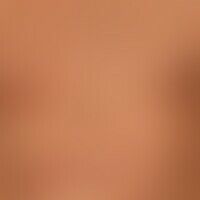
Lupus erythematosus acute-cutaneous L93.1
lupus erythematosus acute-cutaneous: clinical picture known for several years, occurring within 14 days, at the time of admission still with intermittent course. anular pattern. in the current intermittent phase fatigue and exhaustion. ANA 1:160; anti-Ro/SSA antibodies positive. DIF: LE - typical.
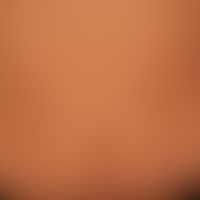
Pityriasis rosea L42
Pityriasis rosea: discreet macular or plaque-shaped exanthema with tender red spots and plaques arranged in the cleft lines.

